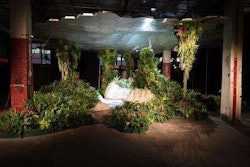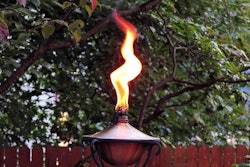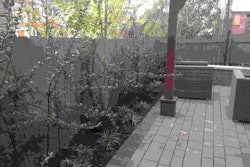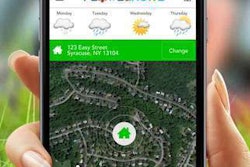 If native plants are installed with a design in mind, they are less likely to look like overgrown weeds.
If native plants are installed with a design in mind, they are less likely to look like overgrown weeds.Photo: Kristine Paulus/Flickr
Changing concepts of what is aesthetically pleasing will always bring contemporaries and traditionalists head to head, and beauty in the landscape is no different.
As the focus on sustainability and environmentally friendly landscapes becomes more prevalent, homeowners are finding it hard to prove their native gardens belong in the yard, especially if the garden is particularly wild looking.
To neighbors and city officials alike, sustainable landscapes featuring native plants can look like an overgrown patch of weeds rather than a sanctuary for bees, birds and other wildlife.
One homeowner in Alberta, Canada, encountered this problem after his newly installed bioswale was mistaken for noxious weeds and mowed over by a neighborhood bylaw officer. When Craig Schlegelmilch attended a city committee meeting to promote natural landscaping so this wouldn’t happen again, he was met with disbelief.
“Is that your yard?” Councilor Ed Gibbons said after seeing a photo of Schlegelmilch’s front yard. “My God. I would be complaining if I lived anywhere near it, too.”
Yet despite their wild appearance, the plants in Schlegelmilch’s bioswale are natives, not weeds. They were installed in 2013 by ecologist Michael Clark, who owns Clark Ecoscience and Sustainability.
He created streambeds that would funnel rainwater runoff from the house to a low point in the yard. The clay-based soil allows wetland plants to thrive in the moist environment, growing knee-high.
“It’s not a quote-unquote pretty yard,” Schlegelmilch said. “I’m even willing to admit we may have gone too far. But here’s the tricky part – this is a living ecosystem. It changes.”
Clark notes that perhaps a way to ease homeowners and neighbors into the idea of a naturalized yard is by only doing half of a bioswale and keeping part of the lawn.
“Using native species lets us get back in touch with our local ecosystems,” Clark said. “I’m just trying to help people make the world the best we can.”
For landscapers who have customers trying to walk this fine line by embracing a wild landscape that isn’t too untamed, there are some designs that compromise between the two.
A meadow lawn can serve as the middle ground between turf and a wildflower meadow. Its mixture of both grass and flowers allows it to have seasonal color and attract beneficial bugs while handling moderate foot traffic.
In order to cultivate a meadow lawn, allow a lawn to grow naturally but keep it tidy with irregular mowing. Blades should be high to allow low-growing wildflowers to begin to thrive. Unwanted plants and weeds should still be removed when spotted.
Another alternative is using a select few native plants in masses, making the wildness seem slightly more contained with this order. Other options include planting one species with structure in mind, while allowing some other native plant to sow a little chaos by self-sowing.
The key is to make sure naturalized gardens have a sense of unity, either through repetition, color schemes or textures. If the yard is a hodgepodge of plants with no balance or cohesive feel, you can bet that neighbors with more traditional tastes will only see an unruly group of weeds that need to be removed.









